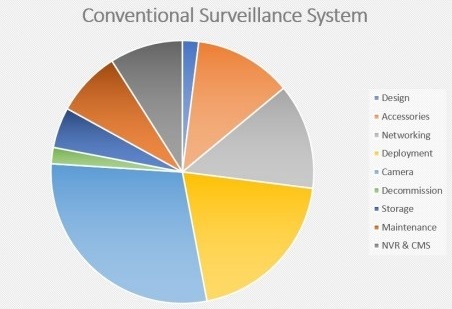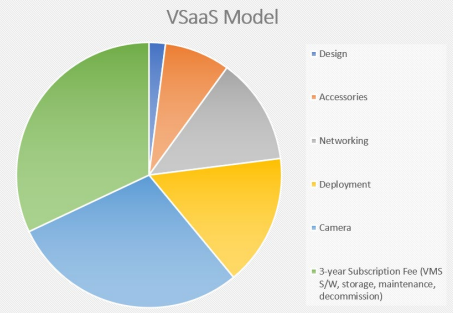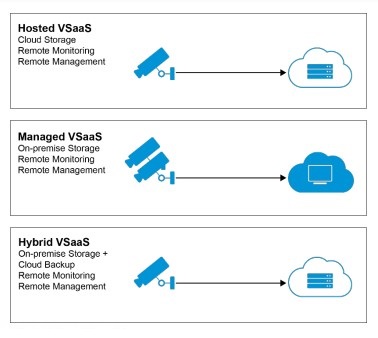Video security as a service (VSaaS) and edge-based solutions are becoming an integral part of security as the technology and affordability appeals to more and more customers. Coupled with SaaS solutions that make applications like analytics easier to adopt, this new form of video security solution is helping customers earn more value from their investments.
Video security as a service (VSaaS) and edge-based solutions are becoming an integral part of security as the technology and affordability appeals to more and more customers. Coupled with SaaS solutions that make applications like analytics easier to adopt, this new form of video security solution is helping customers earn more value from their investments.
Asmag.com recently spoke to David Henderson, the Director of Industrial Marketing for the Embedded Business Unit at
Micron Technology to better understand how VSaaS and edge-based video security solutions are set to play an even bigger role in the future
How do you see the cloud and edge-based video security market now?
Henderson: Cloud and edge computing are driving video security systems from on-premise managed schemes to cloud-based solutions. With the addition of software as-a service (SaaS) applications, the conventional video security system is transforming into a Video Security as a Service (VSaaS) model.
The global IP video security and VSaaS market is growing, particularly in the residential and small-to-medium business sectors. Valued at $18.51 billion in 2018, the market is projected to reach $52.98 billion by 2026—registering a CAGR of 12.9 percent from 2019 to 2026.
As a result, huge volumes of data will be produced, requiring system optimization among data storage, data processing and communication—revolutionizing the VSaaS model.
What are some of the key factors that drive security customers to cloud and edge versus conventional security systems?
Henderson: For most of business owners and managers, reducing expenses is a top priority. One way to do so is with technology. Technology can not only help make operating a business more efficient, it can also make it easier to lower certain expenses. Case in point: cloud-based services.
When looking at ways to reduce costs with implementing a video security systems, one could look at reducing equipment/ technology cost. However, because a video security system is an important investment for a business or company, reducing spending by purchasing low-quality equipment or legacy technology is not ideal.
One way to achieve cost reduction is to consider a Video Security as-a Service (VSaaS) implementation—where certain functionalities are paid with a “pay-as-you-go” model, like an annual subscription plan, instead of with an upfront payment. In this way, the annual subscription fee could be classified as an operating expense (OpEx), which may be deductible.
How exactly does VSaaS lower the total cost of ownership for businesses? Would you have any case studies that could help customers understand this?
Henderson: In a 2017 Micron case study, a total cost of ownership (TCO) analysis was done on a video security system implemented in a newly built manufacturing plant. In that case study, the total project value to deploy a 600-camera system was estimated at approximately $850,000 USD over a three-year contract term.
If we do a simulation model and apply a VSaaS into the 2017 case study and analyze cost structure, approximately $60,000 USD in 3 years would be saved, based on a 23.85% worldwide statutory corporate income tax rate.
This is because the cost of maintenance, equipment (network video recorder and central monitoring system), decommission and storage would be covered by a VSaaS subscription plan, which would reduce the cost of accessories and deployment of the NVR and CMS. Additionally, 30-32% of total project cost would move to “3-year VSaaS subscription fee,” which may be classified as OpEx.
 Project cost analysis: Conventional surveillance systems
Project cost analysis: Conventional surveillance systems
 Project cost analysis: VSaaS
Project cost analysis: VSaaS
Customization is probably a key element of security installations. Can cloud-based video security solutions be tailored to meet business requirements?
Henderson: Certainly. A VSaaS system can be categorized by its storage location and divided into three different models:
- Hosted VSaaS: Video is generated onsite and transferred over a network to the service provider’s data center where it is managed and stored. The recorded video at the service provider’s site is delivered over the cloud as a service.
- Managed VSaaS: Onsite video recording is stored at the customer site and remotely maintained, monitored, and managed over a cloud service.
- Hybrid VSaaS: A combination of hosted and managed VSaaS, the video is stored primarily onsite. Cloud storage is leveraged as a backup if redundancy or longer storage retention is required.
Considering the use cases for enterprise and mid-sized organizations, which could have a significant quantity of security cameras deployed onsite, bandwidth issues and networking reliability could become challenging to VSaaS solutions. In this case, a preferred model would be the Hybrid VSaaS which would use the capacity of on-premise storage to reduce the network bandwidth consumption and also incorporate cloud storage for redundancy or the extended storage retention requirements that ensure and enhance system reliability.
 VSaaS models
VSaaS models
What specific advantages do edge-based storage solutions bring to customers?
Henderson: Edge storage is the use of in-camera onboard storage as the primary storage option, and it becomes a preferred choice for the Hybrid VSaaS model because it offers these advantages:
- Lower storage acquisition cost: By adopting edge storage for the on-premise storage in a hybrid VSaaS model, the need for onsite recording systems is eliminated, resulting in a reduction of total storage acquisition cost (for example, the cost of NVR, installation and power consumption).
- AI integration and network load reduction: This allows for faster decision-making by incorporating edge-based real-time analytics and storage in a hybrid VSaaS model. It also reduces network bandwidth consumption for upload due to in-camera storage capability.
- Flexibility: Using edge storage offers more flexibility to allocate storage capacity for different storage retention requirements. (for example, 4K camera for 60 days storage, 1080p camera for 30 days storage, warehouse camera for 90 days storage, reception camera for 30 days storage, and so on.)
- Scalability: Adding a new camera with edge storage is easy--simply install the camera with onboard storage and cloud authentication.
- System reliability: Using edge storage helps reduce the risk of stop monitoring caused by local recording system downtime
What are some decisive factors influencing video security budgets and projects? How should enterprises and mid-sized organizations approach the design of their security systems?
Henderson: There are several factors to be considered while designing video security solutions for enterprise and mid-sized organizations.
One key element would be remote management capability. An organization that featured several facilities across different cities/states/countries/regions would require a centralized system with remote management capability.
Flexibility and upgradability are also critical factors driving this shift in video security business operations. There are several examples that demonstrate the importance of system upgradability and scale-up capability. For instance, one example would be if a new facility deployment needed an existing video security system to extend its coverage as a requirement of centralized management. Another example might feature a new deployment to address user’s requirements by adding new AI-enabled cameras into the existing video security system.
Finally, the organization must consider the over total investment for the solution. A significant amount of upfront payment for equipment purchasing installation and maintenance service could be a barrier to some business owners because of the huge capital expenditure investment.
Conclusion
The security market is increasingly taking advantage of the benefits of VSaaS and edge-based video security systems. As cloud technology continues to improve and security devices evolve to work better with online storage and management, we may see these segments finding more takers in the future.